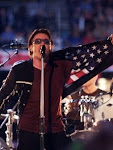
Yeah, about that...
The picture to your left is nothing new, though. People have been predicting the end times for centuries, and U.S. history is full of such instances. In this next section of APUSH, we will explore the beginnings of the Second Great Awakening in America's young experience and compare it to the first Great Awakening a century before. We will also see how higher-minded people set out to reform this nation in the wake of the religious fervor and cultural shift in the 1830s and 1840s. As you study for your next exam (coming next week over "American Pageant", Chapters 12-16), keep in mind how the reform movement grew in this time period, the role women took in the early American reform movement, and advances in public education and the sciences.
Stuff due soon:
1.) Guiding Questions and Graphic Organizer for "Irish Immigration" classroom lesson on Tues., 11/1.
2.) "American Pageant" Chapter 14 & 15 Guidebooks due by Wed., 11/2.
3.) "American Pageant" Chapter 14 & 15 Short-Response Questions (on my webpage) due on Fri., 11/4.
4.) Monterey Institute Unit 3, Chapter 10 Activities due Monday, 11/7. These include:
A.) Lesson 30: "Transcendentalism" - Consider This: "Do you think it would be possible to be as happy living in Thoreau's cabin as in emerson's elegant house?" Be sure while answering this that you show a basic understanding of transcendentalism.
B.) Lesson 30: "The Second Great Awakening" - Consider This: "Though men such as Charles Finney & Peter cartwright were leaders of religious revivalism i nthe early 19th century, notice the strong presence of women in the revival and camp meeting scenes. What ideas do you think the artists meant to express by giving women so consistently a dominant place of interest?"
C.) Lesson 30: "Millerites" - Consider This: "End-of-the-world predictions play on human anxieties and are a regular feature of history, especially at the turns of centuries. How do the preparations of the man depicted in this cartoon compare with those that many people made at the turn of the millenium in expectation of a Y2K disaster?"
D.) Lesson 30: "Alternative Communities" - Consider This: "Communal groups can be very efficient and productive when sincere and like-minded adherents are led by powerful idealists, as in the Shaker and Mormon communities. Why do you think such groups either faded away or altered their system to a more mainstream standard after a relatively short length of time?"
E.) Lesson 31: "David Walker's Appeal" - Consider This: "Did the actions of abolition extremists, like David Walker, help or hurt the antislavery crusade?" Be sure to include several pieces of evidence to back up your opinion.
F.) Chapter 10 Writing Assignment: "Great Awakening/Second Great Awakening" Comparison (be sure to use the Graphic Organizer in compiling evidence to form a coherent thesis AND write an essay).
G.) Chapter 10 Discussion Question: "How did the Second Great Awakening influence the reform movements of the nineteenth century? How did these reform movements socially re-shape the United States and allow for growing sectionalism?"
-Monterey Institute Assignments for Unit 3, Chapter 10, are due by Tues., 11/8.

